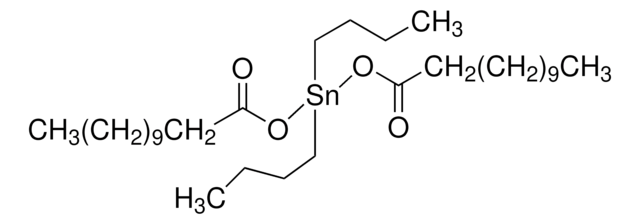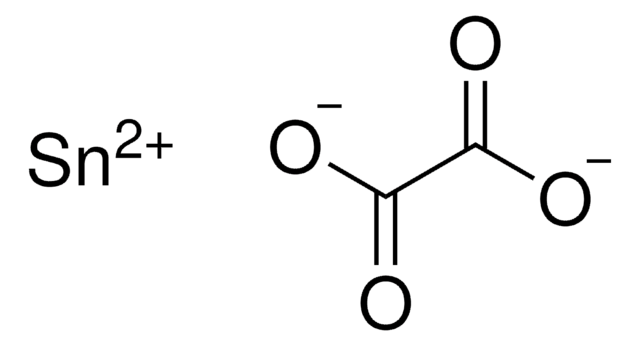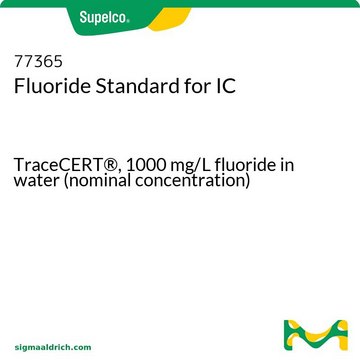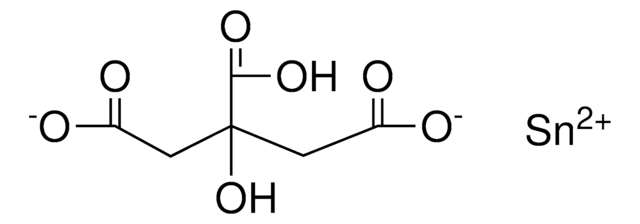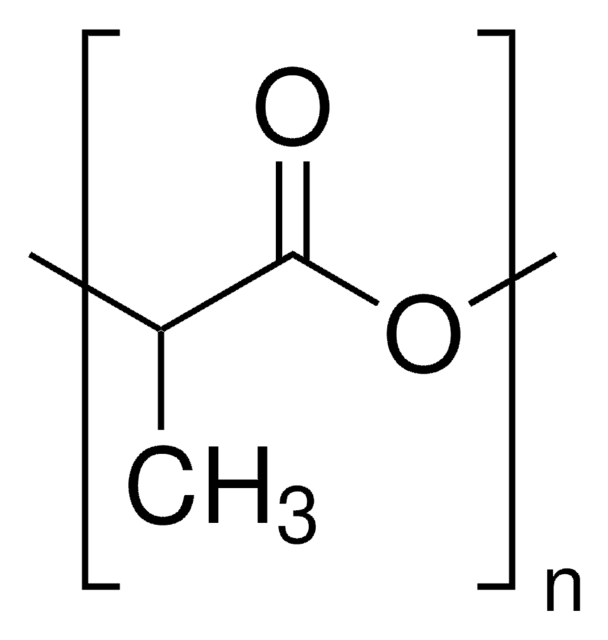S3252
Tin(II) 2-ethylhexanoate
92.5-100.0%
Sinônimo(s):
2-Ethylhexanoic acid tin(II) salt, Stannous 2-ethylhexanoate, Stannous octoate
About This Item
Produtos recomendados
Nível de qualidade
Ensaio
92.5-100.0%
adequação da reação
core: tin
reagent type: catalyst
reaction type: Ring-Opening Polymerization
índice de refração
n20/D 1.493 (lit.)
densidade
1.251 g/mL at 25 °C (lit.)
traços de cátion
Na: ≤0.5%
cadeia de caracteres SMILES
CCCCC(CC)C(=O)O[SnH2]OC(=O)C(CC)CCCC
InChI
1S/2C8H16O2.Sn/c2*1-3-5-6-7(4-2)8(9)10;/h2*7H,3-6H2,1-2H3,(H,9,10);/q;;+2/p-2
chave InChI
KSBAEPSJVUENNK-UHFFFAOYSA-L
Procurando produtos similares? Visita Guia de comparação de produtos
Aplicação
Palavra indicadora
Danger
Frases de perigo
Declarações de precaução
Classificações de perigo
Aquatic Chronic 3 - Eye Dam. 1 - Repr. 1B - Skin Sens. 1
Código de classe de armazenamento
6.1C - Combustible acute toxic Cat.3 / toxic compounds or compounds which causing chronic effects
Classe de risco de água (WGK)
WGK 2
Ponto de fulgor (°F)
278.6 °F - closed cup
Ponto de fulgor (°C)
137 °C - closed cup
Equipamento de proteção individual
Eyeshields, Gloves, type ABEK (EN14387) respirator filter
Escolha uma das versões mais recentes:
Já possui este produto?
Encontre a documentação dos produtos que você adquiriu recentemente na biblioteca de documentos.
Os clientes também visualizaram
Artigos
Atom transfer radical polymerization (ATRP) has emerged as one of the most successful synthetic techniques for the preparation of polymers with predetermined molecular weights, narrow molecular weight distributions, and high degrees of chain end functionalities.
Find how atom transfer radical polymerization (ATRP) tools can be used for the synthesis of well-defined functionalized polymers.
ATRP polymerization, chain transfer agent, living polymerization, functional telechelic polymers
Nossa equipe de cientistas tem experiência em todas as áreas de pesquisa, incluindo Life Sciences, ciência de materiais, síntese química, cromatografia, química analítica e muitas outras.
Entre em contato com a assistência técnica